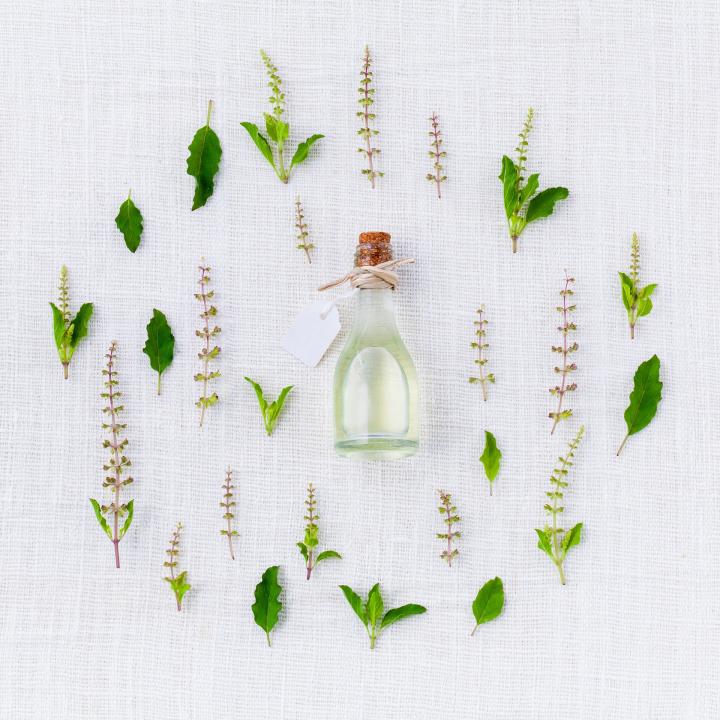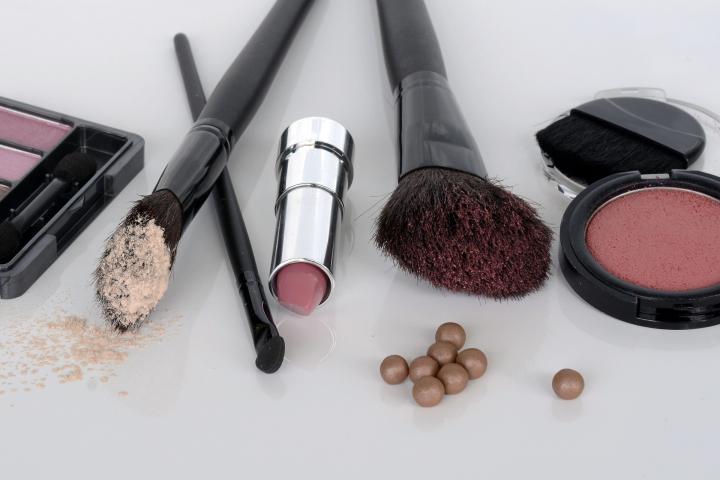History of American Cosmetics
Primary Image
Caption
American women have used varieties of perfumes, rouges, and powders as the history of cosmetics has shifted.
Cosmetics, Beauty, and Hairstyles Through the Centuries
For daily wit & wisdom, sign up for the Almanac newsletter.
Body
The history of cosmetics is a fascinating one, as standards of beauty have changed significantly over the last few centuries. In fact, it was not unusual for upper-class gentlemen to wear makeup or wigs.
Cosmetics, hairstyles, and clothing from America’s early years now seem old-fashioned and humorous—but perhaps that’s how our descendants will view 21st century cosmetics someday!
17th Century American Cosmetics
-
Some Native American males painted their bodies for decoration. One chieftain could spend eight hours painting himself, and the Native Americans used animal fats (which gave them a pungent scent) under the paints to protect their skin from the cold and from insects.
-
In 1651, many upper-class American colonists were angered because some indentured servants had started to use cosmetics just like the landowners. The General Court of Massachusets published an exclusive listing that banned servants from having all “marks” of the gentleman or woman such as hair powder, rouge, and perfume.
-
As early as 1636, Harvard College laid down a prohibition enforced by fines that forbade students “to wear Long Haire, Locks, Foretops, Curlings, Crispings and Partings, or Powdering of ye Haire.”
-
Many homemade cosmetics were used, such as the remedy of a covering of bacon on the face of a sleeper to soften her skin and ward off wrinkles.
-
Egg shells were ground with toilet water to make an acceptable face powder.
-
Lips were reddened by sucking lemons.
-
A wig for women was fashioned with at least a foot high wire frame, covered with material, and then hair was piled and curled over it. Scented powder was sprinkled on top.
-
Men wore large wigs with curly hair reaching their shoulders, which made them resemble shaggy lions.
-
Other American cosmetics of the 17th century were bosom bottles in which fresh flowers and water were placed, masks, patches, and skin lotions.

18th Century American Cosmetics
-
An 18th century American gentleman usually owned a dressing-box that held his razor cases, scissors, combs, curling irons, oil and scent bottles, powder puff, brush, and soap. In the morning after he shaved, rouge and powder were applied.
-
Men wore bits of gummed silk called patches on their faces to cover blemishes but also as decoration. Some patches were in various designs like stars, animals, or ships. At one period, a person indicated his political allegiance by which side he wore his patches on—he was a Tory if he wore them on the right, and a Whig if he wore them on the left.
-
Most gentlemen had a special room in their homes, called a powder closet. Here, wigs could be powdered. The powder might be light brown, blue, grayish pink, violet, or white.
-
Even the soldiers wore wigs throughout the 18th century. One pound of flour was issued to each soldier for the purpose of powdering his wig.
-
At this time, the ladies’ wigs and coiffures were so elaborate that they were done up no oftener than from three to nine weeks in the summer, and a longer period elapsed in the winter. The hair was never combed or touched in the intervals. Poison was applied to the head daily to control the vermin, but sometimes unsuccessfully.
-
Most 18th century American gentlewomen had dressing cases that contained cold creams, bleaches from citrus fruits, hair dyes, false hair, eye shadow made from lamp black or kohl, lotions, and oils. Bottles of water were also placed in the hair to keep flowers fresh.
-
To protect a lady’s skin from the sun, either a velvet or satin mask was worn or large fans made of lace, shell, ivory, or feathers were used.
-
Some ladies retired at night wearing leather gloves dressed with almonds and spermaceti to soften and whiten their hands.
-
Doctors of the time frequently carried canes which, when tapped on the floor, released some perfumed disinfectant through a perforated lid on the cane’s top. This was supposed to safeguard the doctor from disease.
19th Century American Cosmetics
-
In America during the 19th century, the use of cosmetics declined. The elderly used them to conceal the marks of age. More soap was used than creams. A combination of land, rose water and coconut milk made a popular hand lotion.
-
Men decided that cosmetics were effeminate and eliminated all cosmetics except hair-dressing. For this, rich men used perfumed macassar oil and the pioneer men used the available bear’s grease.
-
During the Civil War, northern profiteers started the expensive habit of powdering their hair with gold and silver dust.
-
In 1866, it was discovered that zinc oxide could provide an excellent base for face powder. It was safe, held its color, and was low-priced.
-
Between 1880 and 1900, only the least bit of cosmetics was fashionable. The mark of a true lady was her natural, untouched appearance.
American Cosmetics from the 20th Century to the Present
-
In 1906, Charles Nessler, a German living in London, announced his “permanent” wave. It took eight to twelve hours and cost $1,000. During the first year, only eighteen women dared to have one. Damaging hair with heat was already known as something to avoid for healthy hair.
-
More innovations came, like lipsticks in oval tubes, powder boxes of gold and silver called “compacts,” eyebrow pencils, facial packs made of perfumed mud, eye shadow, and nail and hair lacquer. Despite this innovation, many people look to natural remedies and old-fashioned recipes for their best beauty advice.

-
Cosmetics became a major industry during World War I.
-
In the late 1960s, a drive was commenced to lure men to buy more and more lotions and other cosmetics. Male beauty preparations included an aftershave cream that claimed to have antiwrinkle properties, shampoos, bath foam, colognes, deodorants, moisturizers, hair color restorer, hair spray, and weather lotions.
-
To capture more dollars from the male market, various companies now offer products for facial and skin treatments, hand care, and hair coloring.
-
The 20th century man grew to more and more resemble his 18th century counterpart. We may soon make the same comment as Zeno (a Greek who lived about 350 B.C.) upon meeting a man fragrant with perfume, “Who is this, who smells like a woman?”
Amazingly, people used to think physical traits used to signify your personality! See an old-fashioned take on how appearance determines your personality.
Makeup, hairstyles, and conceptions of beauty are just a few of the many changing elements of American culture! See how much expectations for children have changed since the good ol’ days!
About The Author
The Editors
Under the guiding hand of its first editor, Robert B. Thomas, the premiere issue of The Old Farmer’s Almanac was published in 1792.
Read More from The Editors











